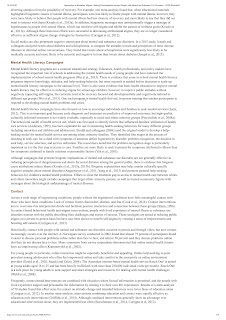Mid-year Break
One of the things that was clear from the feedback I received on my proposal was that I really needed to focus in on the design aspect as opposed to just the solving the problem of destigmatising acne. To do this, I researched into how designers can create an effective Educational Campaign Design:
Educational anti-stigma interventions present factual information about the stigmatised condition with the goal of correcting misinformation or contradicting negative attitudes and beliefs.
Evaluate needs
Your learning platform – the courses, the features and the design – needs to reflect the personal needs of your students. You don’t want a generic, one-size-fits-all approach.
Use information you have on your students – achievements, abilities, strengths and weaknesses. This will help you to understand what they will need from your learning platform.
Draw out the learning platform design
Buildings, films, websites – whatever the project, it always starts with the plan being drawn out. It’s the best way to work out what you need. Go through each element of your project visually and ensure everyone involved can see how the finished article will look.
Start with your objectives for the learning platform, and work back from there, adding the essential features until you can visualise the system you want and need.
Don’t hand it all to them on a plate
As an experienced educator, you will know what students will be great at – and the things they’ll struggle with.
An ideal way of building confidence and ability is to allow students the opportunity to learn how to use a system, rather than make it completely easy for them. It’ll get them used to adapting to different online platforms, ahead of them using CRM systems when they start employment. However, with that said…
Consider user experience
Don’t make it too hard for students to use your learning platform; it’ll distract from the actual learning they are supposed to be doing.
If your learning platform design makes navigation easy, students can spend more time thinking about the questions in your online courses, or how to complete their coursework. A key feature to bear in mind is consistency; keep tasks like moving to another page the same throughout. This means students can focus on the content rather than how to use the platform.
Begin analysing
As soon as your learning platform is up and running, begin looking at how you can improve it. There are always ways you can tweak a feature here or flip a function there to make it a better place for students to learn. Easy access to reliable data can help you with this.
Back end analytics tell you where students are struggling, where they’re succeeding, and how they’re spending most of their time on the learning platform.
You can see where students are interacting with content, and continue to tailor it accordingly to their needs.
Additionally I researched into Contact Interventions:
"Across a wide range of stigmatising conditions, people without the stigmatised conditions have little meaningful contact with those who have these conditions. Lack of contact fosters discomfort, distrust, and fear. Contact interventions aim to overcome this interpersonal divide and facilitate positive interaction and connection between these groups/ In contact-based behavioral health anti-stigma interventions, people who have suffered from acne interact with the public describing their challenges and stories of success, this could be in person or through"
https://www.ncbi.nlm.nih.gov/books/NBK384914/
In order to design a successful solution, which effectively destigmatises the condition, I need to use an empathetice design approach. Therefore, i hope to incorporate feedback and testimonials and user testing from my target audience as often as possible in order to create a user-centric outcome.











Comments
Post a Comment